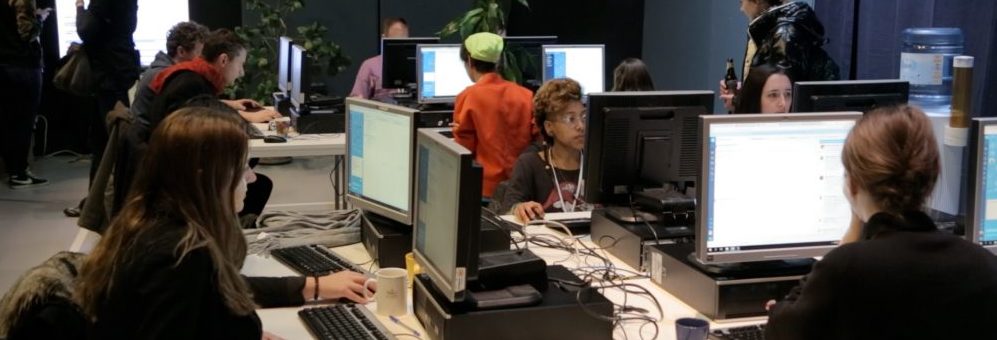The art installation that aims to ‘reverse’ Brexit
Although not all of us are frantically stockpiling following the defeat of Theresa May’s deal on 15 January, many people in the UK are becoming increasingly fearful of the, arguably feasible, prospect of a No Deal. This divorce from the EU has been dominating British news outlets and political discourse for almost three years now and I cannot be the only one who is bored of scrolling down my news app and watching the 10 o’clock bulletin.
I find myself bogged down in convoluted statistics. I am tired of listening to politicians speak for hours on end without ever truly saying anything at all. Most importantly, the causes behind the outcome of the referendum are also rarely examined by the news or the government. Both encourage us to look forward into our bleak future, as opposed to casting our minds back and trying to figure out exactly what happened in June nearly three years ago. We are told to plough on and brush the fact that the Vote Leave campaign broke electoral law under the carpet, distracting onlookers by loudly shouting that ‘Brexit means Brexit’.
The causes behind the outcome of the referendum are also rarely examined by the news or the government
Over four days in January, the artist Jonas Lund confronted this general reluctance to question or acknowledge the Vote Leave campaign’s Machiavellian behaviour. But, instead of resorting to politicians or economists to understand the calamity that is Brexit, he turned to art in an attempt to provoke questions about and interrogate the ways in which the British public was manipulated during the campaign and in the two years since the referendum.
From 10-13 January, Lund occupied one floor of The Photographers’ Gallery (TPG) in London. The Swedish artist wanted to create an interactive, multi-platform project, transforming the floor into a fully-functioning propaganda office. The installation’s official name, ‘Operation Earnest Voice’, referenced the infamous US propaganda office, whose sole purpose was to influence and sway public opinion online by using a range of strategies such as fake accounts, fake news, and fake Twitter bots. His own propaganda office was tasked with creating a campaign to reverse Brexit, using similar strategies campaigns such as Vote Leave and its namesake employed to convince members of the public to vote in favour of their cause.
His own propaganda office was tasked with creating a campaign to reverse Brexit
Selected following an online callout, the project consisted of 12 ‘employees’, ranging from meme makers and marketing experts to Barack Obama and Hillary Clinton’s former presidential campaign photographer, to Guardian journalists. Although the project was unscripted, a range of workshops were organised and talks such as ‘Can the Left win the Battle of the Bots’ and ‘Brexit, Data and Computational Propaganda’ were held. The interactive exhibit aimed to help audience members understand how the public was manipulated during the Brexit campaign through its use of algorithms, targeted adverts and companies like Cambridge Analytica manufacturing consent. The public could ask questions, take part in debates or simply observe the manner in which such life-changing offices function.
However, Lund is quick to remind us that his piece of art acts as a universal comment on the manipulative techniques of certain online campaigning – it was not a specifically Brexit-focussed exhibit. “The physical aspect of the campaign is here [in central London] but the tools can be used anywhere,” says Lund. “Like we see with the Russian influence in decisions made in the EU and America.” He remains ambiguous about his actual position on the UK’s decision to leave the EU, claiming that it is “the level of profiling and modelling that Facebook and other data-gathering operations enable” that he finds “deeply problematic.”
The interactive exhibit aimed to help audience members understand how the public was manipulated during the Brexit campaign
The overall aim then? To unmask the mechanisms that are being used and abused by both sides – left and right, in any country. The universality of this art project, therefore, disproves any, frankly irrelevant, criticism from the Leave Means Leave group. The latter called for the TPG’s charity status to be revoked in a tweet, as Operation Earnest Voice could be regarded as a political campaign, funded by taxpayer’s money. This project was quite the opposite: it served to identify the extent to which we are being manipulated by online campaigns.
As the repercussions of the UK’s divorce from the EU start to be realised, there’s no better time to get to grips with the technology and manipulation that made it possible. We have become numb to politicians and the news, trusting no one and despairing over the Brexit negotiations that seem to be getting us nowhere. Turning to art is perhaps the solution. This installation has allowed people to ask questions, reflect and explore Brexit from a new and essential angle. It makes a change from the anaesthetising news and politicians’ droning voices – and is probably more effective in developing the nation’s understanding of this complex nightmare.

Comments